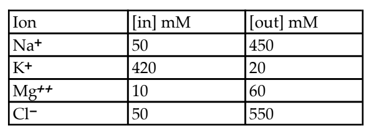Diabetes insipidus is caused by
A) an increase in levels of insulin.
B) a decrease of ADH.
C) increased levels of aldosterone.
D) a decrease in the number of insulin receptors.
E) a decrease in levels of insulin.
B) a decrease of ADH.
You might also like to view...
Voltage-gated potassium channels in a neuron's axon are triggered to open when membrane potential becomes more negative
Indicate whether this statement is true or false.
Though you are an attentive parent, you lost track of your inquisitive toddler for a few minutes, just long enough for him to wander into the garage and open a package of insecticide that you use to control insects in your garden. You have no idea if any of the poison has been ingested, inhaled, or absorbed through his skin. You take the package away from your child and read under the "caution"
section that it is an anticholinesterase. Given that this poison was made for insects, not humans, should you be worried? Explain your answer. What would happen to the child if he has indeed been affected? Explain which type of synapses could be affected. Propose an antidote (it's OK if you don't remember a specific compound, just describe what type of effect may reverse the effects of the insecticide).
You and your fellow deep-sea scientists have discovered a new form of marine invertebrate, and are anxious to determine the similarities and differences to animals already characterized. Chemical analysis reveals the following concentrations of permeable cations:

Nernst equation: Eion = 61/z × log [ion]out/[ion]in
How are T cells "introduced" to antigens?
A. T cells bind to and phagocytose antigens. B. Antibodies immobilize the antigens for T cell recognition and destruction. C. Antigen-presenting cells link antigenic peptides to MHC proteins to which T cells will attach. D. T cells wait in the blood until an antigen collides with them and binds to their TCR.
A hair cycle consists of three developmental stages in which order?
A. Catagen, telogen, and anagen B. Anagen, catagen, and telogen C. Catagen, anagen, and telogen D. Telogen, anagen, and catagen E. Anagen, telogen, and catagen